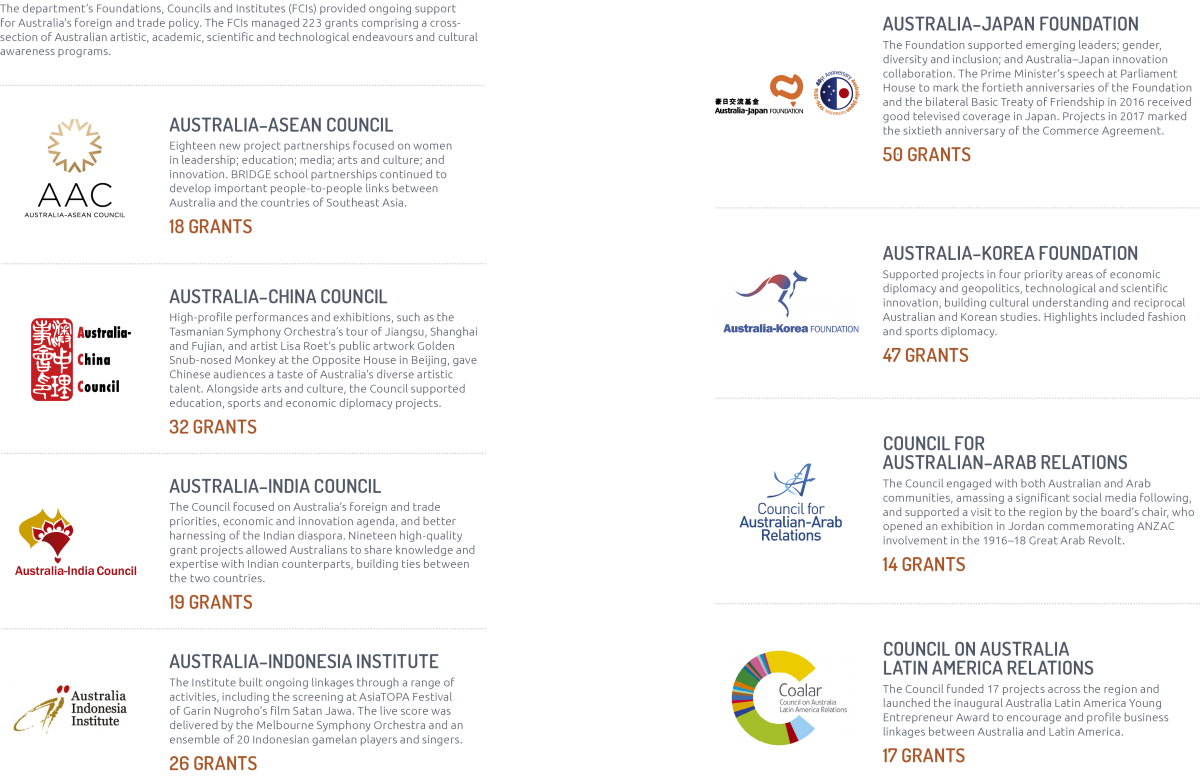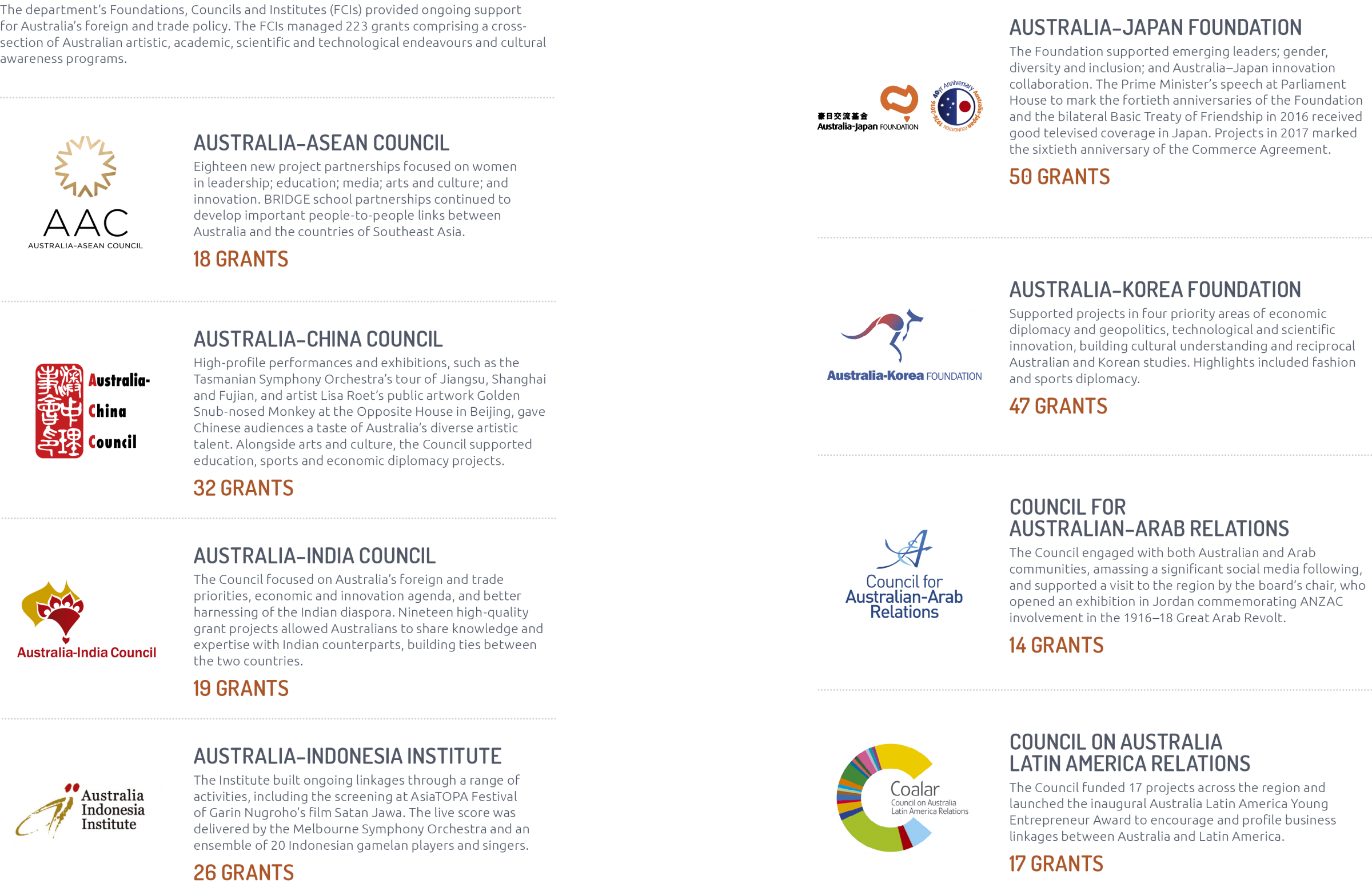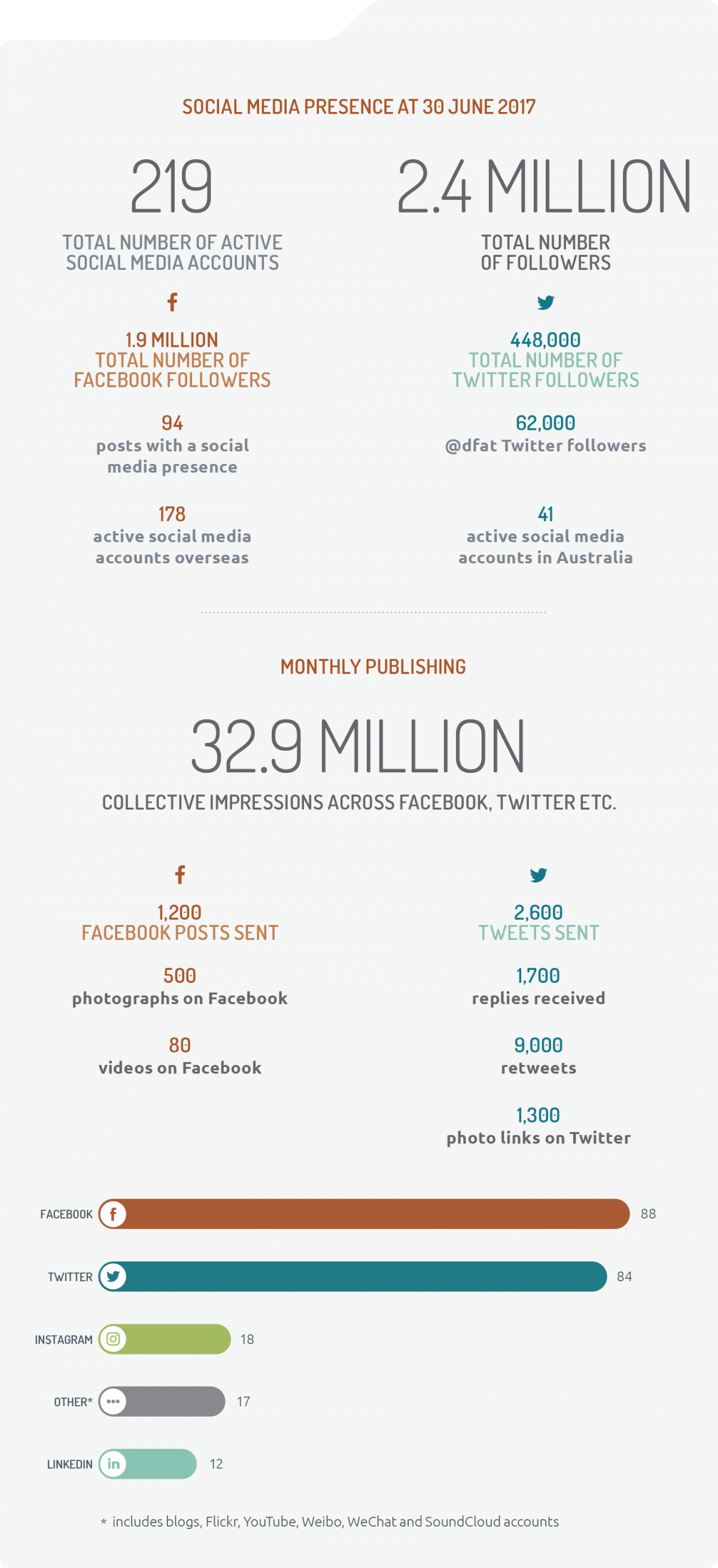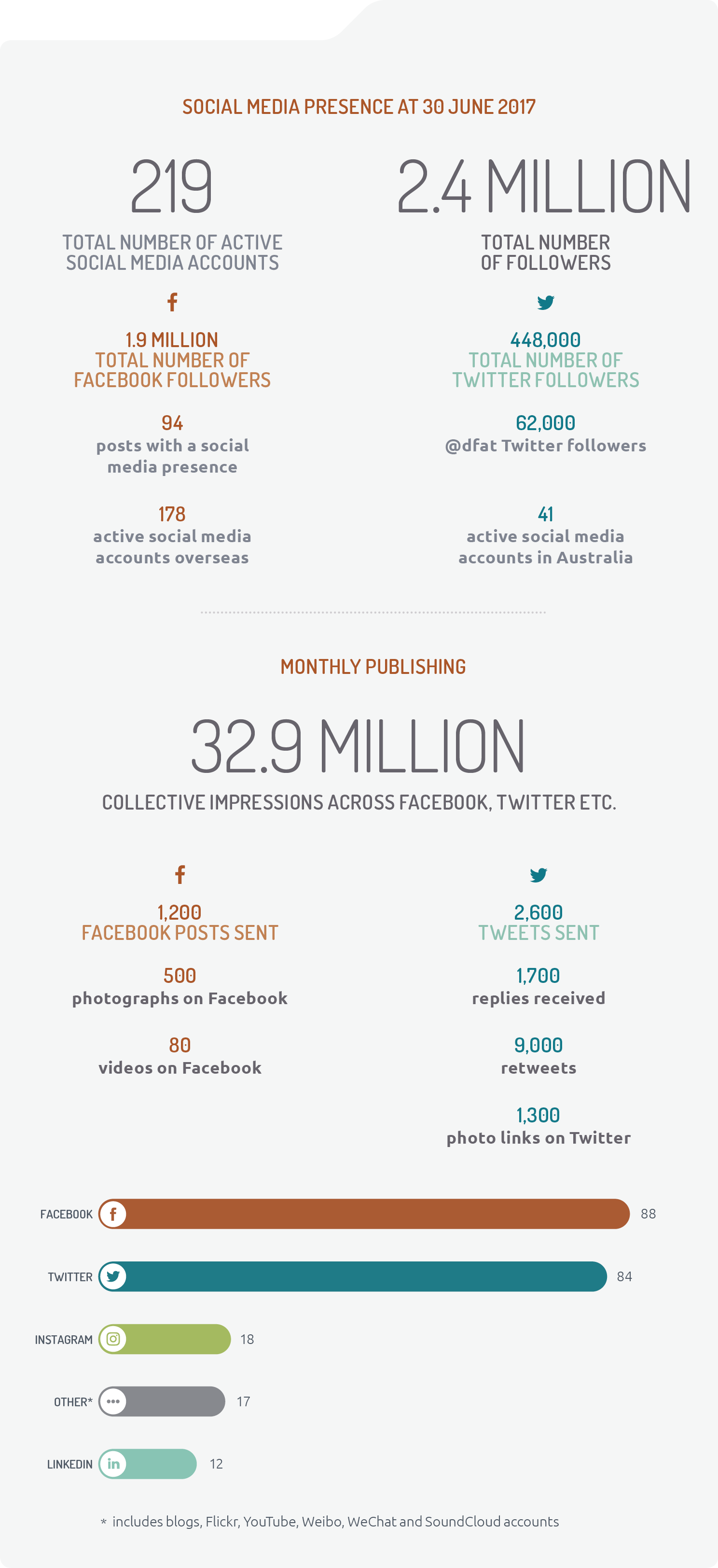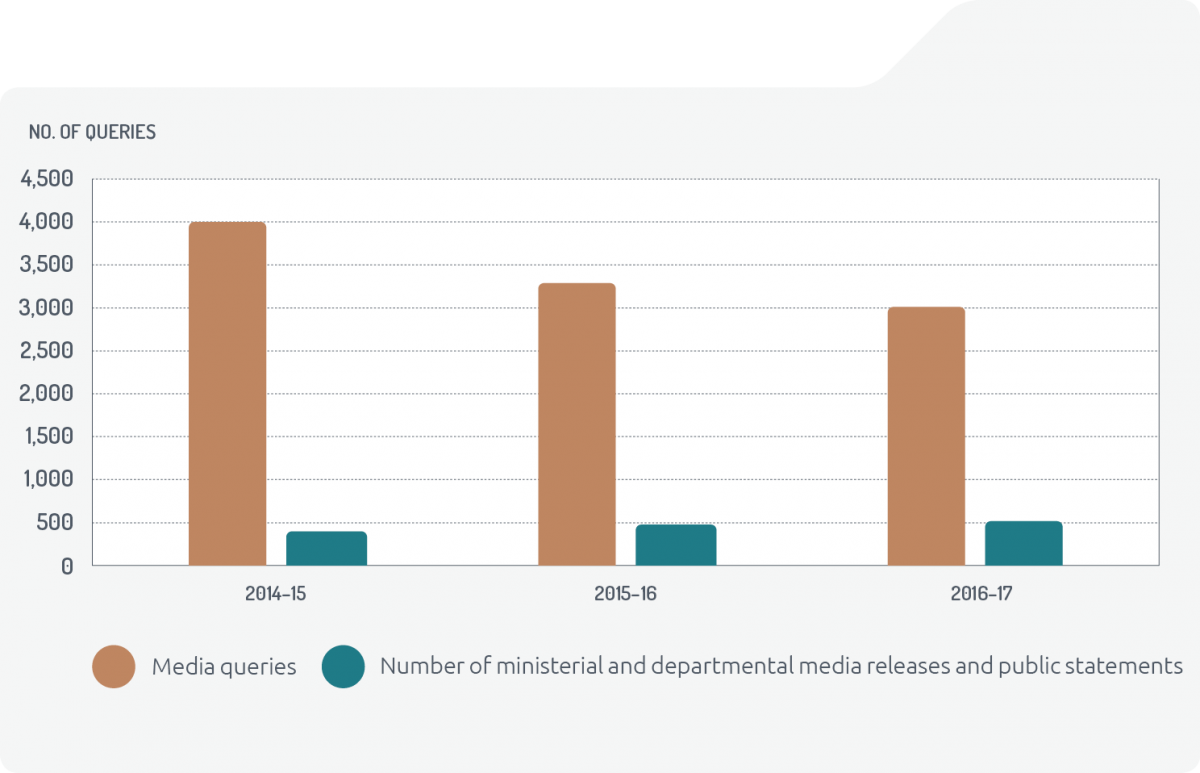Building links, through public diplomacy initiatives, that increase Australia’s influence and further Australia’s interests.
Enhancing Australia’s influence and reputation in Asia
![Acting Consul-General to Hong Kong Janaline Oh delivers an Australia Day speech highlighting Australia’s achievements in innovation, technology and creativity, Hong Kong, 24 January 2017. [DFAT] Acting Consul-General to Hong Kong Janaline Oh delivering an Australia Day speech. [DFAT]](../../../wp-content/uploads/2017/10/76-1280x960.jpg)
Enhancing Australia’s influence and reputation in Asia
Investing in people-to-people links in our region increases our diplomatic influence; strengthens business linkages; promotes our education, science, research, innovation and education capabilities; and showcases Australia as a contemporary, innovative and open society.
The department and the Australia–ASEAN Council supported the inaugural Australia–Vietnam Young Leadership Dialogue (AVYLD) in Sydney. The overall theme was innovation, with a focus on leadership, education, business and entrepreneurship. The AVYLD showcased the dynamism of people-to-people links and the value in fostering the next generation of entrepreneurs, innovators and community leaders who are well placed to promote the further development of bilateral relations.
Our embassy in Dili significantly increased awareness of Australia’s development partnership and bonds of friendship between Australia and Timor-Leste, reaching one in four (110,000) Timorese Facebook followers.
The Australia–ASEAN Council launched a restructured Emerging Leaders Program bringing together 15 young social entrepreneurs from Australia and Southeast Asia, creating new people-to-people links between entrepreneurs across Asia. The program has fostered enduring relationships among participants across the region, with group members actively sharing real-time experiences and leveraging opportunities for collaboration.
The Australia–Indonesia Institute continued to foster greater tolerance and understanding through its flagship Muslim Exchange Program (MEP), while its long-running Australia–Indonesia Youth Exchange Program helped young people from Australia and Indonesia to better understand and appreciate each other’s culture and way of life. Now in its 15th year, MEP established an unprecedented number of post-MEP collaborative projects in 2017 and has established a strong social media presence with over 3,000 followers.
Our Jakarta embassy used social media platforms extensively to promote the Year of Australian Lifestyle. One picture taken during the launch attracted over 51,000 ‘likes’ on Instagram, and thousands more Instagram posts have used the campaign’s hashtag as a part of a broader tourism promotion activity.
The second annual ‘Taste of Australia’ was held throughout April across Vietnam’s four major cities (Hanoi, Ho Chi Minh City, Danang and Nha Trang). The promotion comprised 24 official events supported by 110 partners and sponsors. It focused on Australian food and beverages available in country and highlighted our expertise in vocational training in the hospitality and fashion sectors. Renowned Australian–Vietnamese chef Luke Nguyen again served as the campaign’s official ambassador, while Australian–Vietnamese fashion designer Betty Tran joined as the campaign’s fashion ambassador. All events received extensive media coverage in Vietnam.
We supported high-level participation in the second Australia–India Leadership Dialogue, bringing together influential thinkers from both countries, and we funded initiatives through the Australia–India Council grant program to build awareness and understanding between the two countries. For example, we highlighted Australian technical expertise on smart city technology and future urban development in workshops held in Australia and India. We supported the ‘Confluence: Festival of India in Australia,’ showcasing dance, music, theatre and visual arts from India. The festival generated almost 900,000 social media engagements and was broadly reported in print media in India and Australia.
We also hosted a visit to Australia by five Indian parliamentarians under the Young MP Program. The visitors expressed their strong desire to further increase our parliamentary engagement. Now in its fifth year, the program has introduced close to 30 young and influential Indian politicians to senior Australian officials and academics.


![Minister for Trade, Tourism and Investment Steven Ciobo, Consul-General Houston Alastair Walton and Ambassador to the United States Joe Hockey at the G’Day USA Great Australia–Texas BBQ. [DFAT]](../../../wp-content/uploads/2017/09/75-1024x683.jpg)
![(L. to R.) Assistant Minister for Trade, Tourism and Investment Keith Pitt, Director Bottles of Australia Anton Pemmer, and Assistant Minister for Social Services and Multicultural Affairs Senator Zed Seselja attend an FTA information seminar in Canberra, 2017. [DFAT/Patrick Taylor]
Assistant Minister for Trade, Tourism and Investment Keith Pitt, Director Bottles of Australia Anton Pemmer and Assistant Minister for Social Services and Multicultural Affairs Senator Zed Seselja attending a FTA information seminar in Canberra. [DFAT/Patrick Taylor]](../../../wp-content/uploads/2017/10/79-1280x960.jpg)
